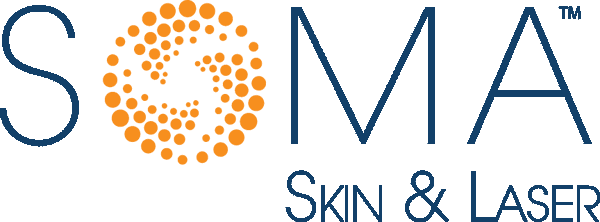What is a freckle and what is a sunspot?
A freckle, medically known as an ephelis, is a normal skin finding, present from childhood, with no risk of malignant degeneration. It is a hyperpigmented macule (flat lesion) that occurs in sun-exposed skin and darkens with exposure to ultraviolet radiation. such as sunlight. The cause of a freckle is an increase in the amount of melanin (a dark pigment) in the epidermal layer of skin. There is no increase in the number of pigment producing cells (melanocytes). Freckles are often treated for cosmetic reasons, typically with a laser, such as the Revlite q-switched laser.
A lentigo (pl. lentigines) is a uniformly colored hyperpigmented macule (flat lesion) with distinct borders caused by an increased number of pigment-producing cells called melanocytes. This is in contrast to a freckle (ephelis), which is caused by an increased amount of melanin but no increase in the amount of melanocytes. There are broadly speaking two typed of lentigines: lentigo simplex and actinic lentigo (also called solar lentigo). The lesions of lentigo simplex appear in childhood and are limited in number. Actinic lentigo, often thought of a sunspots, begins in middle age and can be multiple in sun-exposed areas, such as the head, neck, and back of the hands. The lesions of actinic lentigo, sometimes called “liver spots” by patients, are found in the majority of elderly Caucasians, but do not typically cause a medical complaint.
With what might freckles and lentigines confused?
Lentigo simplex occurring in childhood can be confused with a freckle or a junctional nevus. Actinic lentigo in adults additionally can be confused with seborrheic keratosis and, importantly, lentigo maligna. Lentigo maligna is irregularly colored and irregularly bordered, occurring on sun-exposed areas; it is in situ malignant melanoma.
What can I do for freckles and sun spots?
Freckles are normal. But if you don’t like them, various laser treatments are available to decrease the appearance of freckles.
Although lentigines are not a medical problem, they are often of cosmetic concern. Laser ablation is usually effective. Cryotherapy with liquid nitrogen is sometimes used. Bleaching agents, such as hydroquinone, are not usually helpful. Tretinoin cream 0.1% (e.g. Retin A) applied daily can lighten these lesions, but this treatment often results in irritation and is therefore best reserved for multiple lesions not easily treated with other modalities. To lessen irritation, less frequent application can be used or less concentrated formulations of tretinoin.
How are freckles and sunspots prevented?
Sunscreen with a minimum SPF of 15 to 30 is essential to prevent further actinic lentigo. Sun screen and sun avoidance will help prevent darkening of freckles.
